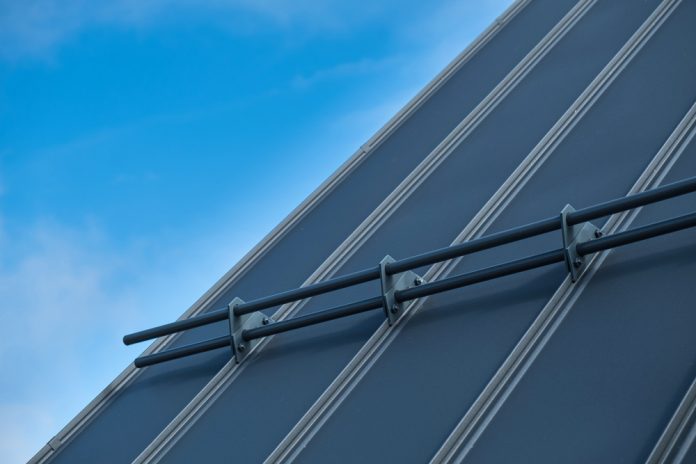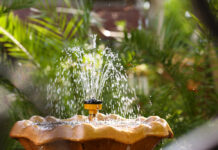Compared to asphalt shingles, metal roofing is far more durable. Field-locked standing seam roofs can last two to three times as long as asphalt, up to 60 years. Metal roofs can withstand the elements much better than asphalt roofs. No matter what tough weather conditions your home is exposed to, a metal roof will keep your investment safe for many years. Alliance Group Contracting explains how metal roofs, specifically standing seam metal roofs, provide a better seal against the weather and keep moisture out of your home.
Advantages of a Metal Roof
Unlike asphalt roofing, a metal roof is completely unaffected by the growth of moss, fungus, and mildew. These problems can negatively impact the strength and security of a wood or asphalt roof. In heavily-wooded areas, some rodents or pests may be able to damage your roof, but metal will keep them out.
Metal roofs are also resistant to fire. This can be helpful in lowering some anxiety in areas that are prone to wildfires. Metal roofs can also withstand extreme weather, particularly hailstorms and high winds. Some metal roofs are constructed to stand up to 130-mile-per-hour winds.
Types of Metal Roof Construction
R-panel metal roofs are the most low-maintenance and easy to install. They have lower labor, time, and disposal costs. However, they are not as strong or durable as other types of metal roofs and must frequently be repainted or coated.
Corrugated metal roofs are familiar from their use on barns and outbuildings. Frequently, these roofs are galvanized, which makes them strong in many different types of weather. These roofs are relatively inexpensive but last longer than R-panel roofs.
Architectural standing seam metal roofs provide superior wind uplift protection. They are more water- and wind-resistant than other metal roofing systems due to the way their panels interlock.
With all types of standing seam metal roofs, the hardware used is concealed, keeping these vulnerable points out of the weather and safe from damage. This is one of the key points that makes a standing seam metal roof superior to any other type.
These roofs are tightly constructed, providing a watertight seal that is better than any other metal roofing system. Water cannot easily work its way into the building. Manufacturers often apply a sealant to the panels, maintaining their structural integrity in variable weather conditions.
Types of Standing Seam Metal Roofs
Standing seam metal roofs come in a number of different profiles. The roofs are mainly categorized by the type of seam that holds the roofing panels together. Each type of seam has its own selling points.
Some of the most popular types of roof seaming are snap-lock, mechanical seaming, batten panels, and nail flanges. Below, Alliance Group Contracting explains how these methods work to make a roof strong and last long.
Snap-Lock Roofs
A snap-lock roof is constructed in the factory with a male side and a female side, allowing the panels to be snapped together without hardware. This kind of roof is simple to install, since it does not need mechanical seaming. The advantage of the snap-lock roof is that the system floats freely with its clip system.
Snap-lock systems need to be installed on roof pitches of 3/12 and above. They can be used in any environment as long as they are installed correctly.
Mechanical Lock Roofs
Mechanically-seamed roofs are roll-formed. They have specific edges that are meant to line up together. To connect the two panels, a hand or mechanical seamer bends the edges to lock the panels together. There are two different types of mechanical seams: single-locking 90-degree seams and double-locking 180-degree seams.
Single mechanical locks refer to the seam being folded once at 90 degrees. Single locks may not be as effective as double-locked panels, but it is easier to replace a damaged panel than with double-locked roofs.
A double-locked panel folds over twice when it is seamed. (180 degrees) Double-locked systems are suitable for applications needing extra weather-tightness, even on a lower-pitched roof. Double-locked panels are an ideal choice for roofs in cold weather areas with the potential for freezing and thawing. As the snow and ice freeze and thaw, they also expand and contract. This could potentially disengage a snap-lock roof panel.
Batten Panels
Batten-panel roofing systems refer to the two legs of the panels which are roll-formed and pressed against each other. A metal cap goes over the legs to create the seam, and the cap is either snapped on or mechanically seamed.
Nail Flanged Standing Seam Roofs
Nail-flanged systems are the most popular for residential applications. Instead of using a clip to attach the panel to the deck, it is fastened directly to the deck through the male leg. After the fasteners are in place, the female leg snaps over, hiding the fastener head.
Nail flange systems are the most affordable type of standing seam metal roofs. There are fewer required accessories for installation. They do have a few drawbacks when compared to other types of standing seam roofs. For one, they do not always accept roof clamps for solar panels. They cannot be used on low slopes. The roof is pinned, meaning that it cannot expand or contract as well. If they are not formed properly, they can distort over time.
Choose a Standing Seam Metal Roof That Is Right for You
Working together with your builder, you can choose the best type of standing seam metal roof for your needs. Every type of standing seam metal roof is stronger than conventional metal roofing, because they can accommodate expansion and contraction. Alliance Group Contracting recommends choosing the standing seam metal roof that closely matches your home’s building requirements.
Find a Home-Based Business to Start-Up >>> Hundreds of Business Listings.
















































